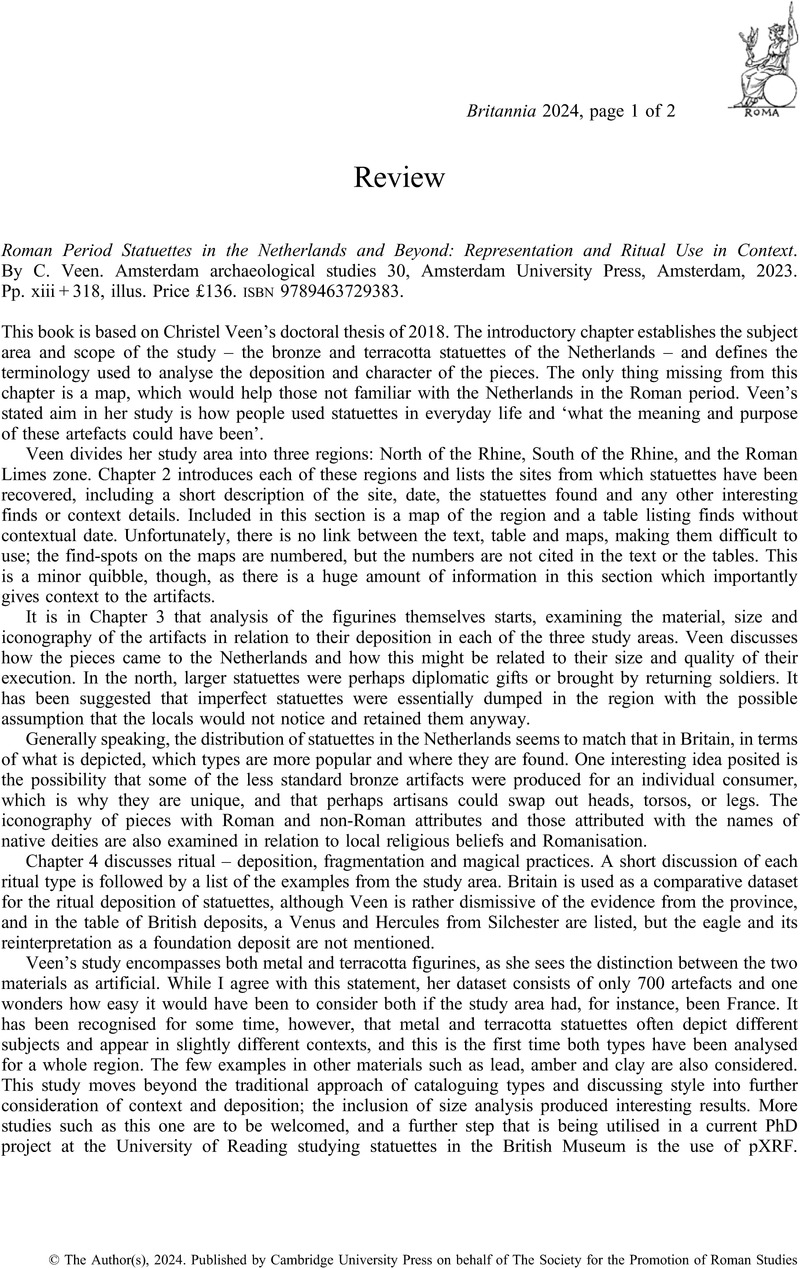No CrossRef data available.
Roman Period Statuettes in the Netherlands and Beyond: Representation and Ritual Use in Context. By C. Veen. Amsterdam archaeological studies 30, Amsterdam University Press, Amsterdam, 2023. Pp. xiii + 318, illus. Price £136. isbn 9789463729383.
Review products
Roman Period Statuettes in the Netherlands and Beyond: Representation and Ritual Use in Context. By C. Veen. Amsterdam archaeological studies 30, Amsterdam University Press, Amsterdam, 2023. Pp. xiii + 318, illus. Price £136. isbn 9789463729383.
Published online by Cambridge University Press: 31 May 2024
Abstract
An abstract is not available for this content so a preview has been provided. Please use the Get access link above for information on how to access this content.

- Type
- Reviews
- Information
- Copyright
- Copyright © The Author(s), 2024. Published by Cambridge University Press on behalf of The Society for the Promotion of Roman Studies


